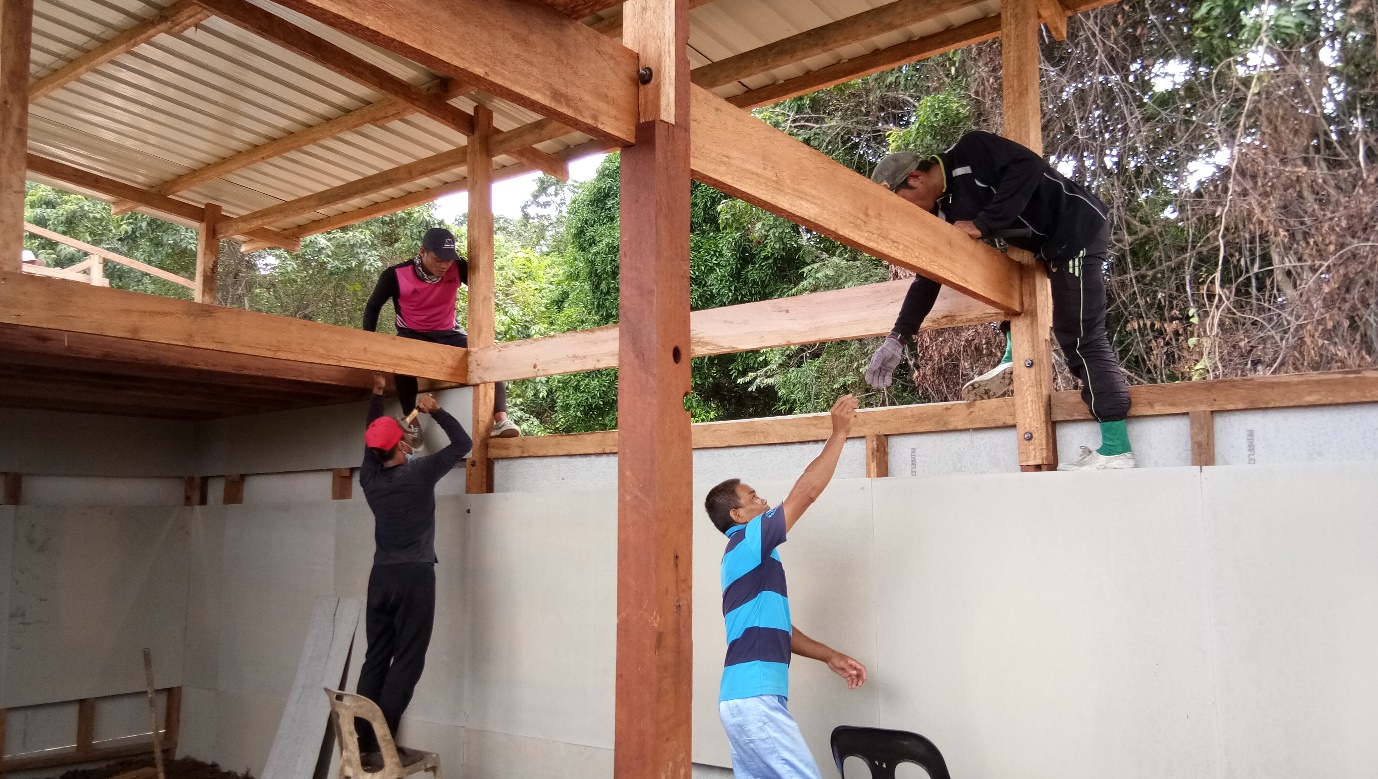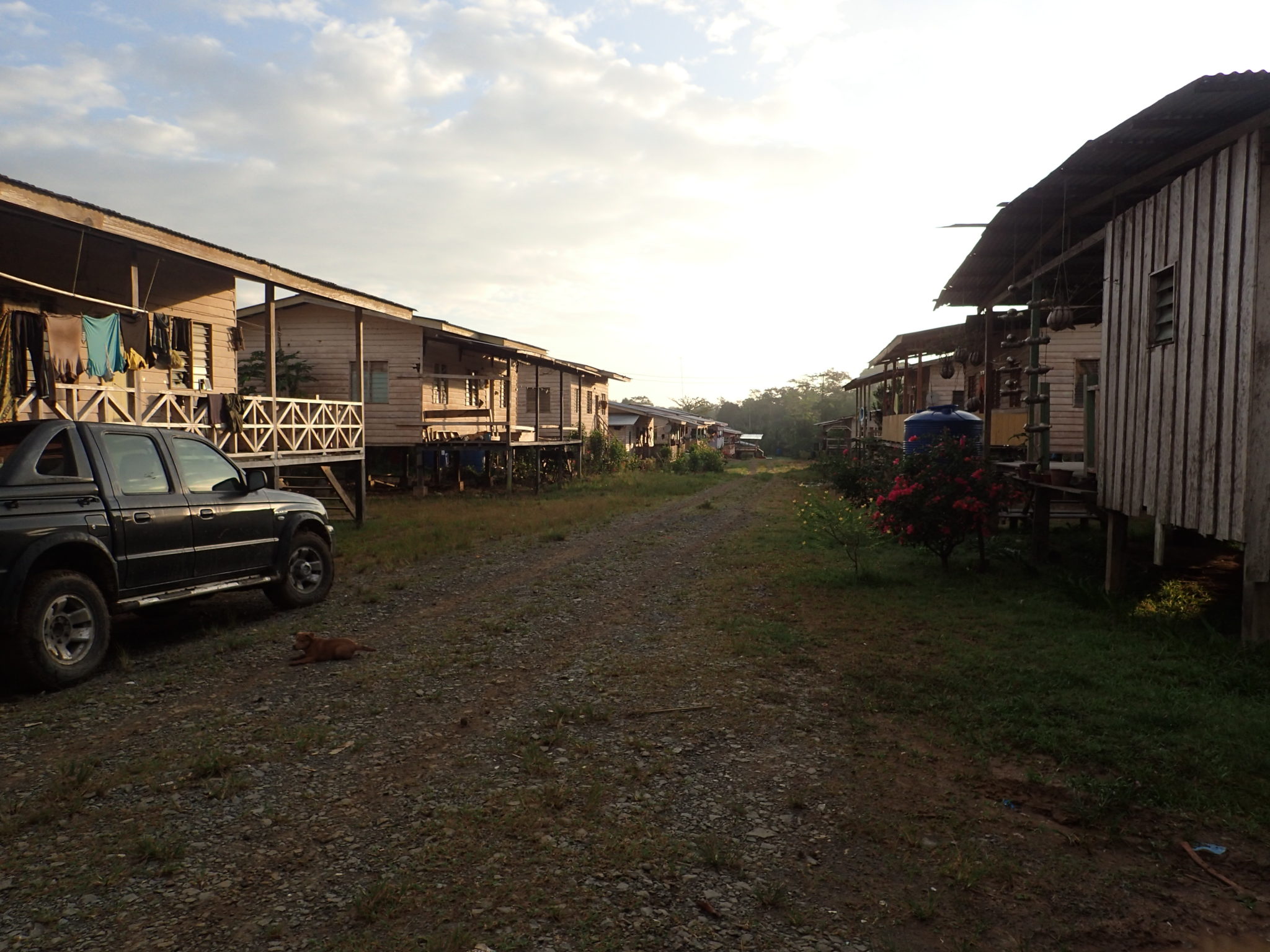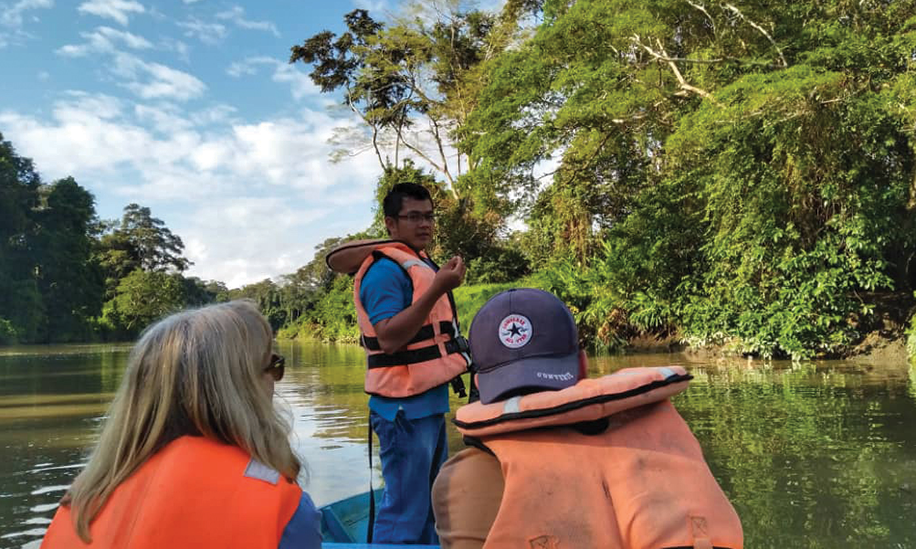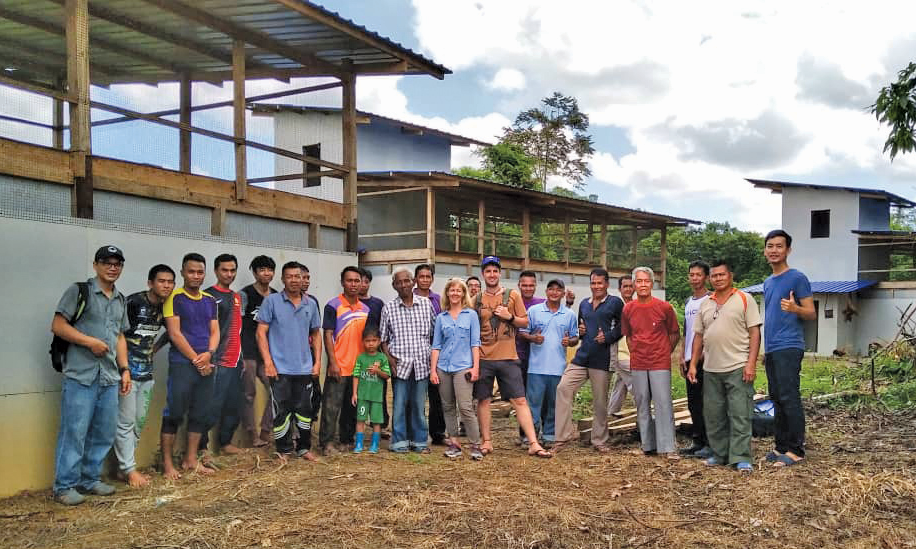Helping a remote Malaysian village resist the devastation of palm oil
By Chris Wright
Malaysia Field Representative
“This tree is full of spirits,” said Najib, as we hummed downstream, carving our way just above the water’s surface, in an elongated, carved-wood boat no bigger than your average kayak. In fact, I can remember my father and myself falling into rivers from plastic kayaks that were probably just a little bigger.
This boat was made by Najib’s father, Ramsa, who that day, was carving a new boat for their annual race down the river. He is the leader of Dagat Village, and carries both the love of nature and his skills as a carpenter hand in hand. In fact, he’s lost half of his two middle fingers to his carpentry. When you meet him, he’ll tell you his favorite joke: that when he signals for three kilograms of fish, they only give him 2.5. He’s the one who taught Najib about this tree.
The tree—a six-foot-wide giant—stood like an old man in traffic. Unfazed by our engine’s buzz, unmoved in the wind. Its upper branches fanned out in a mushroom-like storm cloud of green shade over the river’s edge. It had stood like that for generations, a home for hornbills and countless other birds. Today, it staged a game of monkey-tag for an extended family of macaques.
For the Tidung people of Northeastern Borneo, these intimate scenes of both common and endangered animals rarely make the selfie folder, let alone Instagram. It is an everyday interaction, and one that has traditionally always been peaceful, but for a few tumultuous moments in their history.
During what the older people refer to simply as “the war,” the Japanese came with big plans, planes, and cruelty. For three years during World War II, Japan ruled over Northern Borneo, forcing many Tidung people to flee their ancestral homes, but prompting some of them to become heroes.
“I want to show you something,” said Patir, as I walked past his house in Dagat. He went inside and came back onto the veranda with a small framed photo.
“My grandfather helped save some of the soldiers, and the military gave him this.” It was an official plaque of gratitude from the Australian military, a medal and a black and white image showing a small Malaysian man, dressed in traditional formality, next to a group of moustached military men from Australia, close to twice his size.
His grandfather had saved one of the six lone survivors from the infamous “Sandakan Death March,” and this photo was one of few ornaments inside the raised plywood house.
As bad as the war was, it perhaps wasn’t as disrupting as the modern expansion of oil palm has been. This all-consuming mono-crop has spread across once pristine wildlife sanctuaries, full of trees like the one Najib pointed out from the boat.
These days, getting to Dagat from the capital, Kota Kinabalu involves a six-hour drive, across Northern Borneo along the one- or two-lane highway that crosses the mountain ranges, up and down a snake’s tail of turns. From there, the road slows. As you exit the highway, you enter a rocky dirt track, pounded daily by three-tonne trucks hauling mounds of oil palm bunches. Their destination: the refineries, belching white smoke, that process the oily fruit and send its oil out to be added to everything from Doritos to toothpaste.
Bumping down that road to Dagat, you’ll see patches of virgin forest within the Tabin Wildlife reserve. In those patches are elephants—once rarely seen, but now, as their habitat shrinks, they are closed into small corridors of forest by the river. You’ll also see birds that will make you question God’s creation, with upside-down beaks and songs that the locals compare to chainsaws.
Then, after drumming your wheels through the maze of palm oil trees and crawling past dozens of overloaded trucks, you’ll finally arrive at Dagat. There’s a small row of raised, wooden houses beside the river, with old men making single-carry boats, and young ones lifting prawn traps (marked by floating soda bottle markers) from the river to see what’s for dinner. The traps, woven by women whose strong hands would make even a rock-climber’s fingers wilt, provide the main food source and income in Dagat these days.
Our project, seeking to build three swiftlet shelters so that the community can harvest the birds’ nests and sell them to Chinese traders, will be a small boost to that economy. It is being led by Najib’s generation, but built by all. It will be a small step that we hope will bridge the gap between Najib and his father’s generation, and one that will help this community continue its tradition of living with and protecting the forest.
Chris Wright oversees Seacology’s projects in Malaysia, where he has lived for the past eight years. Check out our video interview with him at seacology.org/fieldreps for more discussion of our work there.





